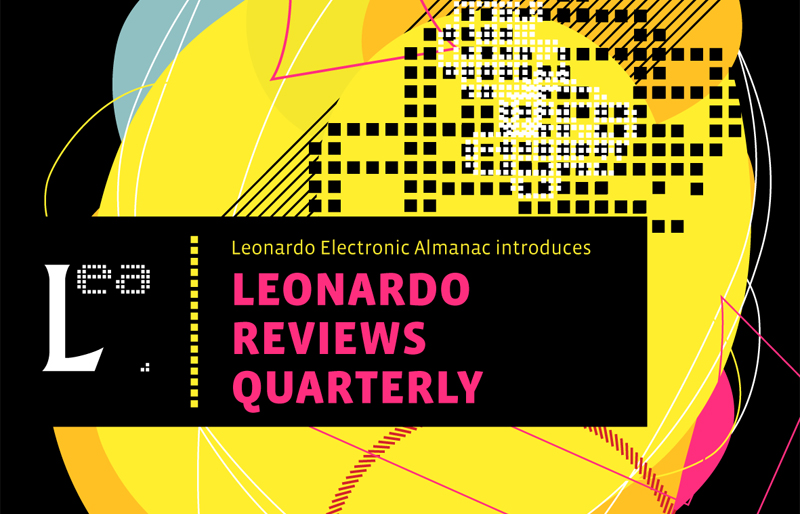
Playing with Words: The Spoken Word in Artistic Practice
by Cathy Lane, Editor
CRiSAP, London, 2008
205 pp., illus. 90 b/w. Trade, £12.99
ISBN: 978-0-9558273-3-4.
Reviewed by John F. Barber
Digital Technology and Culture
Washington State University Vancouver
When one thinks of a composer, one generally thinks of music, or some other sonic form. Rarely, does one think of the sonic qualities of the spoken word. But, as Cathy Lane, co-director of Creative Research in Sound Arts Practice (CRiSAP) at the University of the Arts, London, notes, there is broad and deep body of work undertaken in this area by John Cage, William S. Burroughs, François Dufrêne, Kurt Schwitters, and Henri Chopin—and other sound poets, text sound artists, composers, and verbal experimenters.
Where once such work was undertaken in relative isolation, there is now an interconnected and well-established community who freely share ideas, and inspiration. Many of these contemporary practitioners are included in Lane’s edited volume Playing with Words: The Spoken Word in Artistic Practice. Each has been asked to engage with the motivating ideas and artistic concerns that inform their work, and how to translate the elusive qualities of their work with sound into the fixed medium of print.
This, of course, is a problem. The sonic ephemeral does not always easily, or effectively, translate, or migrate, into the fixed state of print. And despite Lane’s detailed explanation about the various experimental methods used by the contributors to describe the “sounds heard, used, produced or even unheard except in the imaginings of the ‘mind’s ear’” (9), the end result, although creative, is, ultimately, visual-textual descriptions about sounds, not the actual aural artifacts themselves.
One of Lane’s contributors, composer, performer, and poet Jaap Blonk, notes the irony in his essay, “Sound,” when he writes that “[h]earing is everywhere. And it knocks at every window of your cochlea. . . . You hear! You hear, you hear sound! Sound” (32, 33). But, we only read the representations of sound.
Still, as Lane notes in the introduction, there is a social, cultural, and political power in words, as there is the opportunity for “artistic intervention” to bridge the gaps between the semantic and abstract components of words (10). This notion of power becomes a central theme of the collection.
For example, Ansuman Biswas draws inspiration for his work from Mohandas Karamchand Ghandi, whose teachings speak to the attribute in the human spirit that restricts us to the use and service of the immediate surroundings rather than the remote. Viewing the human voice as an example of technology most available at the local level, Biswas says, “I love the immediacy and constant availability of the voice” (46). Where Biswas feels writing is an invaluable aid to memory “but . . . can also be misleading” (45), Joan La Barbara describes how she begins her composition of music with stream-of-consciousness writing, listing all the words she can determine as possible inspiration for the new composition. For La Barbara, writing is the basis for sound. In addition to words, her notebooks also include graphic shapes to help her visualize the energy of a particular sound, or the mood of a section. The combination of words and imagery help her “transmit a more precise sense of the trajectory, energy, and delivery of the sound” and allow the listener to recreate her sonic idea in their own minds (56).
Composer Trevor Wishart notes the “richness and complexity of everyday sounds,” especially those associated with the human voice, and says, “The voice connects with so many things. When we speak we not only convey meanings but we portray things about ourselves, simple things like what gender we are or whether we are ill or healthy, but also, perhaps, what our intentions are, what our mood is” (71). These qualities of individuality that come through one’s voice promote both the capture of the individual quality of voice as well as its abstraction. As a result, new information is available.
For John Wynne, a sound artist who works with the click languages of the Kalahari Desert, language is the primary repository of culture and history, “and once a language is no longer spoken, the rich knowledge it carries is gone forever” (81). Paul Lansky, recognized as one of the pioneers of computer music, posits his use of the computer as an instrument in order “to project the image of the human performer behind the screen.” In using freeform versus scripted narrative, Lansky calls the former “everyday sound” and “performance” while the latter is “eavesdropping” (109).
Toward the end of the collection, almost like a bookend to Lane’s original comment about the power in words, Laurie Anderson calls words “magic,” says they can change people’s minds, and concludes “there are no more powerful things in the world than words” (184).
In the end, as Katharine Norman writes in her essay that it is the give and take between words, language, text, and place that produces the “play” in the book’s title. It is this play that provides the opportunity to tell a story, another theme of the collection. Each contributor is trying to tell a story through the inclusion of sound, generally, the human voice, the voice of the storyteller, in their works. Missing however, is that sound, the aural qualities of the speakers’ voices knocking at the window of our cochlea. It would seem of additional interest to actually hear these voices, rather than just read about the process of their inclusion.
Leonardo Reviews is a scholarly review service published since 1968 by Leonardo,The International Society for the Arts, Sciences, and Technology. Publishers and authors interested in having their print or electronic publications considered for review by the panel should contact Michael Punt, Editor-In-Chief, Leonardo Reviews.
Files:
